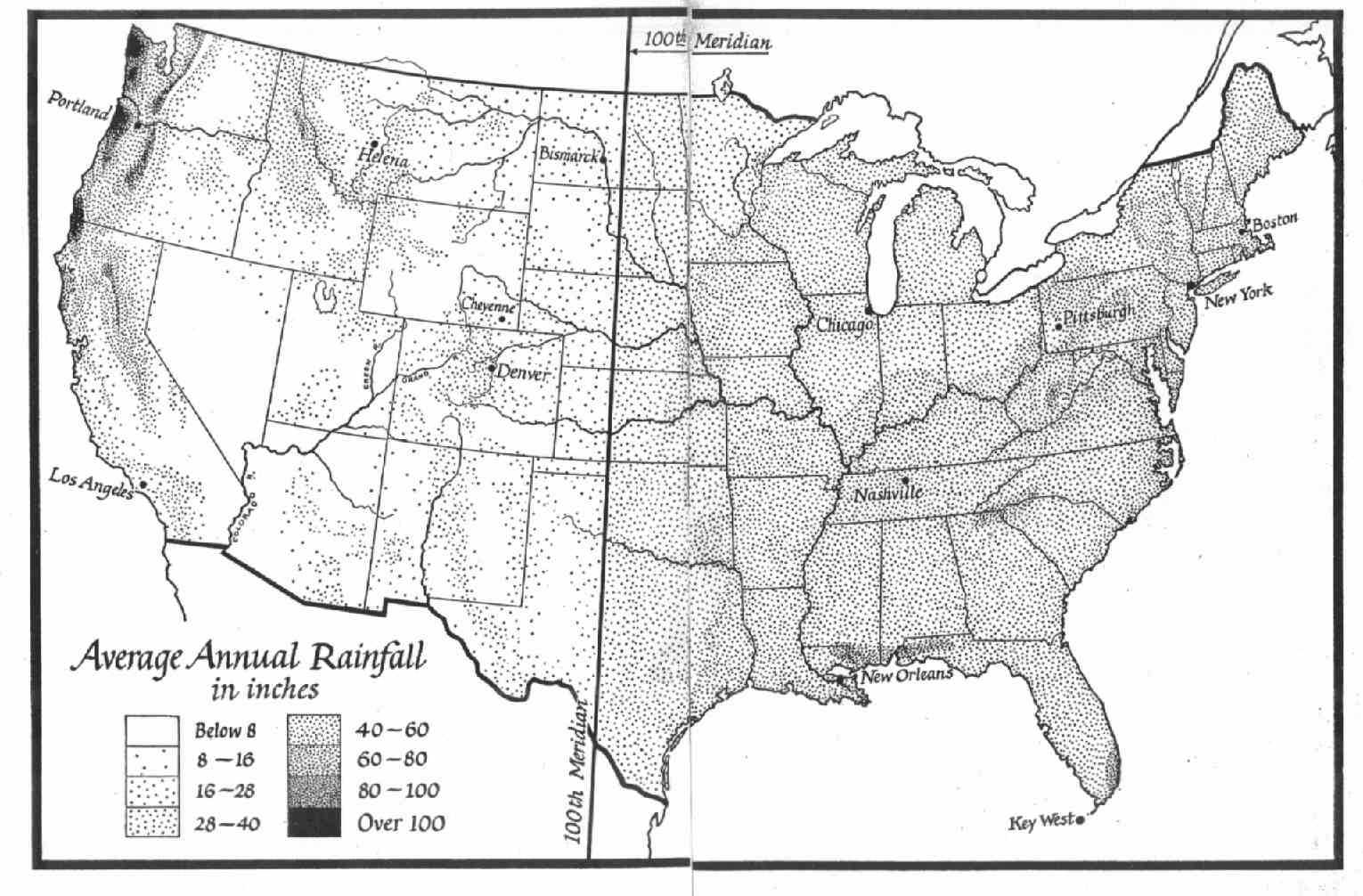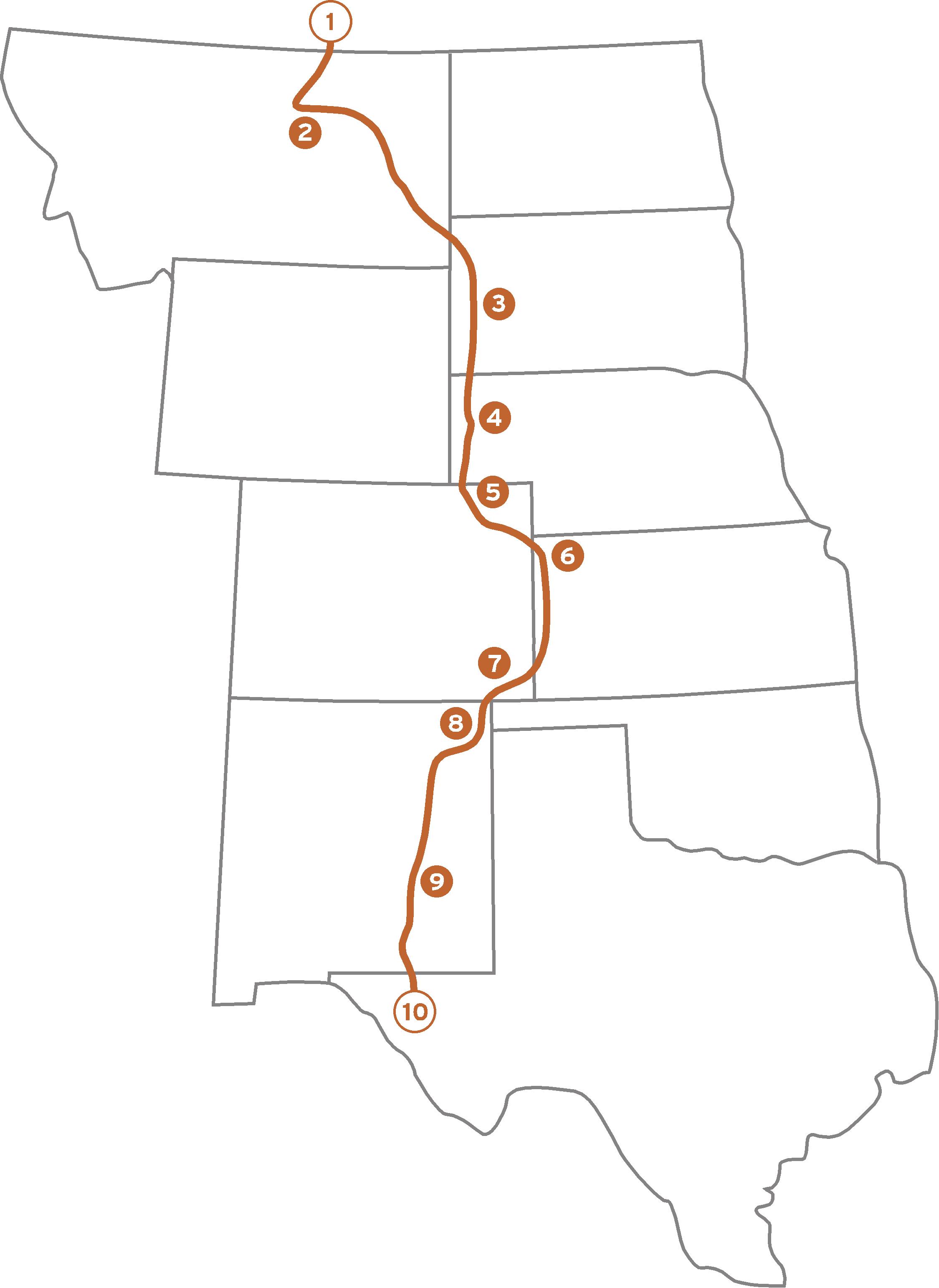Meridians are another name for lines of longitude. The concept of longitude is fairly old and can be traced back to Eratosthenes in the 3rd century BC. The measurement of longitude (particularly at sea) however is an entirely modern scientific construct. It wasn’t until the late 1700s, with the invention by John Harrison of a vary reliable clock, the chronometer, that longitude could be determined with any sort of accuracy at sea.
There is nothing astronomically significant about the 100th Meridian west. It merely represents and angle of 100 degrees from the Prime Meridian at the Royal Observatory in Greenwich, England. However, in the history of the American West, the 100th Meridian has great significance. It marks a line from North Dakota to Texas to the west of which, the climate can be characterized by semi-arid or arid lands. To the east of the line, the atmosphere receives moisture from the Gulf of Mexico, and as a result, much more average rainfall.
The 100th Meridian also marks a boundary in the average elevation of the land. With a few exceptions both east and west, most of the land to the west of the line is above 2,000 feet, and most of the land to the east is below 2,000 feet.
Few markers or monuments exist to denote the 100th meridian, but its presence can be felt as one travels across it as easily as one can sense the passage of time. Traveling from the east, the land opens up and trees become more scarce. The air becomes drier and an invigorating sense of space envelops you. It’s a powerful transformation in the land, and one that many generations of people have felt. It’s a simple line on the globe that somehow marks your entry to, or perhaps exit from the American West.
The Great Plains Trail lies entirely to the west of the 100th meridian in the open lands of the shortgrass prairies. Regardless of any longitudinal number, the land is special here. To quote the Montana writer, Annick Smith, “(It’s) a land as open and mysterious as the palm of God’s hand.”




5 Responses
Nice post. I learned something, being surprised at the relatively late significance of longitude. I guess I learned too things, because I always thought Eratosthenes was one of the characters in the T.S. Eliot poem “Old Possum’s Book of Practical Cats .” My kids informs me that I’ve confused the third century genius with Mr. Mestoffelees, who was magical but not particularly bright. My bad. Should I be more serious here? Why not? I’ve been enjoying the heck out of this blog, and the groundwork you’ve been laying for an incredible, lasting, magnificent venture. Rock on, pal–and steer clear of massive rat migrations.
Thanks Chuck! Durn those rats . . . Hey, spent some time with Henry a few weeks back at an event for my little project here. He helped me man the booth and we had a good time drinking beer and eating local Mexican fare . . .!
Two things! I learned TWO things, not too. Jeez.
Let’s simplify the language. “too” should stand for the number as well (too)!
Geography 101.